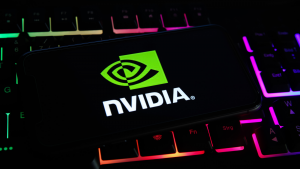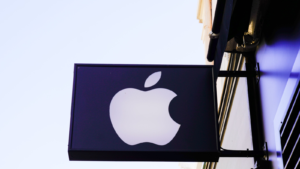Undervalued large-cap stocks present a particularly good opportunity right now. Markets are rebounding after Fed Chairman Jerome Powell indicated yesterday that the central bank would slow its pace of interest rate hikes. That said, all three major indices in the U.S. remain down on the year, with the technology laden Nasdaq still in a bear market.
The latest data out of the U.S. showed that inflation rose 7.7% in October from a year ago, which is still well above the Fed’s 2% target. This raises the likelihood that the central bank will continue raising its benchmark interest rate in the coming months, albeit at a slower pace.
As rates continue inching higher and inflation slowly decelerates, stocks are likely to remain volatile. And the retreat over the first three quarters of 2022 has left many large-cap stocks deeply undervalued. This presents an opportunity for investors who can tolerate the near-term ups and downs of the market and keep their eyes fixed on the long-term.
Here are seven seriously undervalued, large-cap stocks to buy now.
Amazon (AMZN)

Amazon (NASDAQ:AMZN) stock is now trading under $100 a share. Consider that a Christmas gift.
Following Amazon’s disappointing third-quarter earnings and lowered guidance, AMZN stock is down 43% on the year. Even a 20-for-1 stock split undertaken at the beginning of June hasn’t helped the share price.
Having given up most of the gains it achieved during the pandemic when consumers were forced to shop online, AMZN stock seems to have been abandoned by consumers. Yet analysts say that is a mistake, and the company is poised for a rebound.
For its part, Amazon is doing what it can to try to raise its share price, as the company earlier this year announced a $10 billion stock buyback program.
Amazon also completed its second Prime sales event of the year in October, which should give its fourth-quarter earnings a boost. Further, the company has reduced its staff levels and taken other cost-cutting measures as it tries to adjust to the current economic environment.
While Amazon’s price-earnings (P/E) ratio is hefty at 89 times, it is not that high when one considers the company’s nearly $1 trillion market capitalization or that it generates more than $100 billion of revenue each quarter. Take advantage of the shares’ weakness and buy the dip of AMZN stock.
Nvidia (NVDA)

Few large-cap technology stocks have been beaten down as much as semiconductor company Nvidia (NASDAQ:NVDA). NVDA stock has tumbled 44% in 2022 to $168. In November 2021, the company’s shares were trading above $300, and that was after a 4-for-1 stock split.
The share price has been hurt by mounting fears that the demand for Nvidia’s chips and semiconductors will slow along with the global economy. To be sure, the company’s earnings for the third quarter were a disaster with revenue down 17% year-over-year. The Q3 print didn’t help the share price at all.
Nvidia has also lowered its forward guidance multiple times this year. It most recently said that it expects about $6 billion in sales in the current fourth quarter, lower than the average estimate of $6.09 billion among analysts who cover the company.
Nvidia CEO Jensen Huang has stressed that the company is grappling with a “challenging macro environment.” Still, Nvidia, whose chips are used in everything from supercomputers to artificial intelligence applications, remains a solid, long-term buy.
Its P/E ratio is high at 71 times, but it has come down this year with the share price. And, unlike many tech stocks, Nvidia pays a dividend that yields 0.10%. It’s not the most generous dividend, but it makes NVDA one of the more reliable undervalued large-cap stocks to buy.
Nike (NKE)

Shares of the world’s largest supplier of athletic shoes and apparel have been pummeled this year. The stock of Oregon-based Nike (NYSE:NKE) has plunged 33% since January and now trades at $110 per share. The decline, while no doubt troubling to shareholders, makes NKE stock a screaming buy.
A year ago, Nike’s stock was trading 62% higher at $177 a share. Its big decline has been due largely to the same issues that are vexing companies all over the world – supply chain problems, excess inventories, Covid-19 lockdowns in China, and slowing consumer spending.
Most recently, Nike reported fiscal first quarter earnings that surpassed what was expected on Wall Street. The company announced earnings per share of 93 cents versus the 92 cents that analysts, on average, had forecast. Nike’s revenue for its fiscal Q1 totaled $12.69 billion, compared to the $12.27 billion that had been anticipated.
Looking forward, Nike said it expects its revenue to grow by around 10% year-over-year in the current quarter. While that’s not the most bullish outlook, the bottom line is that Nike will recover from this difficult year and remains a seriously undervalued stock for long-term investors.
NKE’s price-earnings ratio of 31 is slightly high, but it’s justified given the company’s market-leading position. And NKE stock pays a quarterly dividend that yields 1.24%, which is good for a payout of 34 cents a share. Grab this stock while it remains on sale.
Undervalued Large-Cap Stocks: Apple (AAPL)

Apple (NASDAQ:AAPL) stock is trading at around $147. Analysts’ median price target on AAPL stock is currently $176.50 a share, with a high estimate of $200. The shares’ P/E ratio of 24 times is the lowest it has been in years and the stock pays a dividend that yields 0.62%.
With Apple, investors also get a company that buys back more of its own stock than any other publicly traded concern and is increasingly diversified, venturing into new areas ranging from streaming to buy now, pay later. Apple also remains the world’s leading consumer electronics company with its iPhones and Mac computers.
As with many companies, Apple is dealing with issues that include supply chain constraints, wage inflation and slowing consumer spending in the face of rising interest rates. Its iPhone production has also been hurt by the Covid-19 lockdowns in China.
AAPL stock took it on the chin after the company announced that it was scaling back production of its new iPhone 14 due to the issues in China and weaker consumer demand than forecast. The company’s most recent earnings report was mixed but managed to beat analysts’ average expectations.
Despite a rocky road this year, Apple’s lower share price should make the stock more appealing to value investors.
Additionally, Apple announced that its board of directors had greenlit a $90 billion share buyback program, which is on top of the $85.5 billion of share repurchases that it carried out last year. Over the long term, AAPL stock will remain a winner.
Costco (COST)

The shares of big-box grocery retailer Costco (NASDAQ:COST) are down 11% in 2022. At one point this year, the stock had fallen more than 30% but has managed to recover by demonstrating that its sales remain strong despite high inflation and rising interest rates.
The company’s latest sales figures were mixed. Costco said its net sales for the period came in at $19.17 billion, up 5.7% year over year. However, the firm’s e-commerce sales fell 10.1% during the period. COST stock declined 3% on the data.
However, Costco has retained the loyalty of its customers by announcing that it would not raise its membership fees this year, holding them at $60 for a regular annual membership and $120 for an executive membership.
The stock’s P/E ratio of 41 times looks high at first glance, but investors need to keep in mind that Costco is on track to surpass $200 billion of sales this year, making it one of the more impressive undervalued large-cap stocks .
The company’s stock pays a dividend that yields 0.67%, but Costco has a history of paying out special, one-time dividends as well.
Microsoft (MSFT)

Seattle-based Microsoft (NASDAQ:MSFT) is a seriously undervalued technology stock. Founded by Bill Gates and Paul Allen in 1975 and publicly traded since March 1986, Microsoft today is a well-diversified and battle-tested technology company that is involved in everything from computer software and video games to online search and cloud computing.
The company is hugely profitable and generates positive cash flow. And its stock has been a consistent winner for shareholders over the years.
While MSFT stock is down 24% this year, it is up 200% over the past five years and has gained more than 800% since November 2012. Today Microsoft has a market capitalization of nearly $2 trillion, a reasonable price-earnings ratio of 27, and is one of the few mega-cap tech stocks that actually pays shareholders a quarterly dividend (Its payout currently yields 1.1%).
While the company has not been immune to the economic challenges afflicting the global economy this year, it remains one of the tech giants best positioned to weather the storm and come out stronger on the other side.
Currently trading at $255 a share, MSFT stock is definitely worth buying at its current levels.
Undervalued Large-Cap Stocks to Buy: American Express (AXP)

The shares of credit-card giant American Express (NYSE:AXP) are fresh off a 52-week low and currently trading right around $155 each. Down 6% this year, AXP stock is at its most affordable level since the pandemic struck in March 2020.
The stock’s price-earnings ratio of 15 times is right around the average of companies listed in the S&P 500 index. It pays a 1.32% quarterly dividend.
With people all over the world traveling and vacationing again, there’s every reason to be bullish on AXP stock and the company’s future earnings.
But don’t take our word for it. Consider that American Express is one of legendary investor Warren Buffett’s favorite stocks. The Oracle of Omaha has held his current position in AXP stock for more than 30 years and never sold a single share.
Besides its traditional credit card loans, American Express also operates an end-to-end payment system that facilitates transactions between consumers and businesses. Revenue from those transactions is today the company’s biggest source of revenue.
On the date of publication, Joel Baglole held long positions in NVDA, MSFT and AAPL. The opinions expressed in this article are those of the writer, subject to the InvestorPlace.com Publishing Guidelines.
Joel Baglole has been a business journalist for 20 years. He spent five years as a staff reporter at The Wall Street Journal, and has also written for The Washington Post and Toronto Star newspapers, as well as financial websites such as The Motley Fool and Investopedia.
